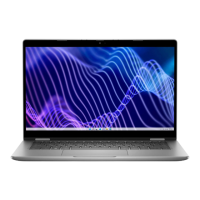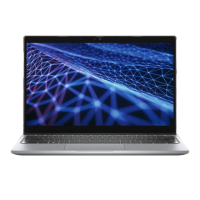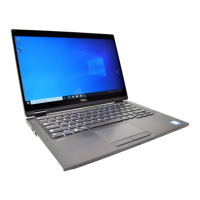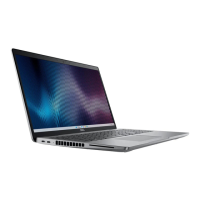Table 10. System setup options—Power menu
Power
Battery configuration Enables the system to run on battery during peak power usage hours. Use the
table Custom Charge Start and Custom Charge Stop, to prevent AC power
usage between certain times of each day.
By default, the Adaptive option is enabled.
Advanced Configuration
Enable Advanced Battery Charge
Configuration
Enable or disable the advanced battery charge configuration.
By default, the Enable Advanced Battery Charge Configuration option is
disabled.
Peak Shift Enables the system to run on battery during peak power usage hours.
Enable Peak Shift
By default, the Enable Peak Shift option is disabled.
USB PowerShare When enabled, external devices like phones or portable music players can be
powered or charged using the stored system battery when the system is in
sleep state.
Enable USB PowerShare
By default, the USB PowerShare option is disabled.
Thermal Management Enables to cool the fan and processor heat management to adjust the system
performance, noise, and temperature.
By default, the Optimized option is enabled.
USB Wake Support
Wake on Dell USB-C Dock When enabled, connecting a Dell USB-C Dock will wake the system from
Standby, Hibernate, and Power Off.
By default, the Wake on Dell USB-C Dock option is enabled.
Block Sleep Enables to block entering sleep (S3) mode in the operating system.
By default, the Block Sleep option is disabled.
Lid Switch
Enable Lid Switch Enable or disable the lid switch.
By default, the Enable Lid Switch option is enabled.
Intel Speed Shift Technology Enable or disable the Intel speed shift technology support.
By default, the Intel Speed Shift Technology option is enabled.
Table 11. System setup options—Security menu
Security
TPM 2.0 Security
TPM 2.0 Security On Allows you to enable or disable TPM visibility to operating system.
By default, the TPM 2.0 Security On option is enabled.
Attestation Enable Enables to control whether the Trusted Platform Module (TPM) Endorsement
Hierarchy is available to the operating system.
By default, the Attestation Enable option is enabled.
Key Storage Enable Enables to control whether the Trusted Platform Module (TPM) Storage
Hierarchy is available to the operating system.
By default, the Key Storage Enable option is enabled.
SHA-256 When enabled, the BIOS and TPM will use the SHA-256 hash algorithm to
extend measurements into the TPM PCRs during BIOS boot.
BIOS setup 63

